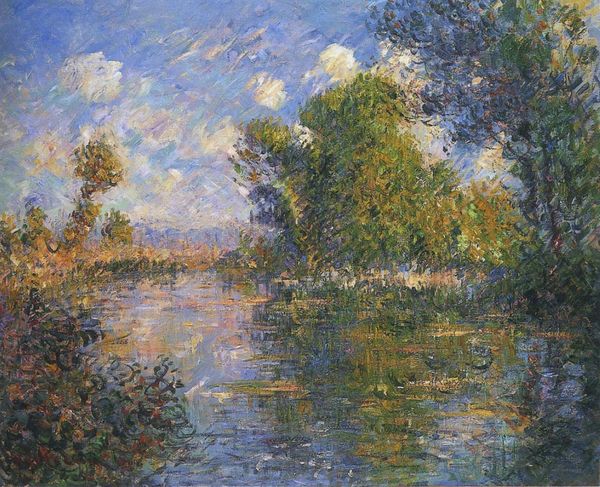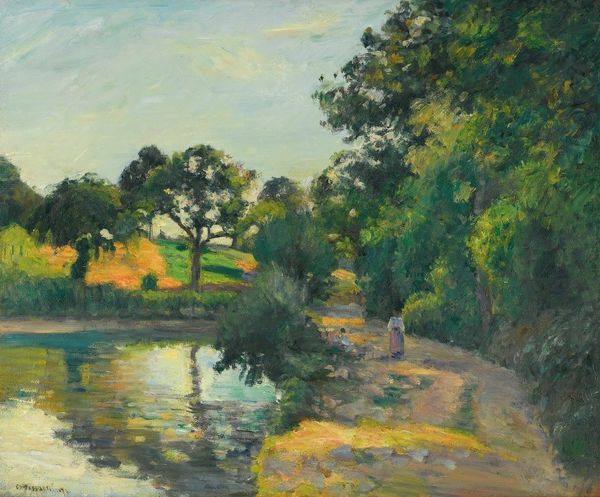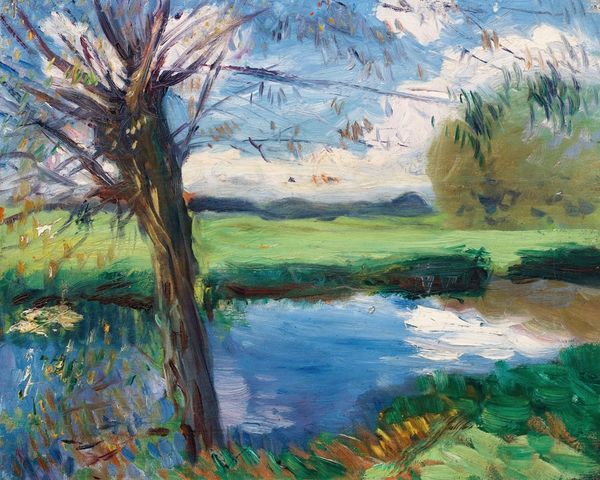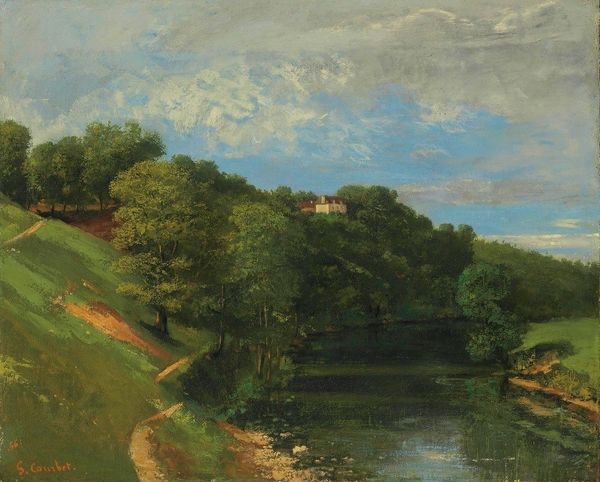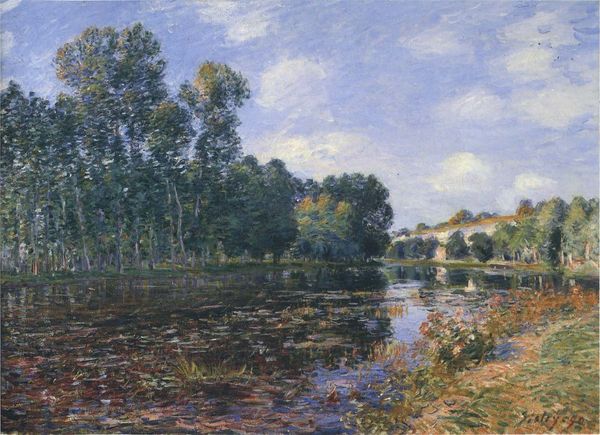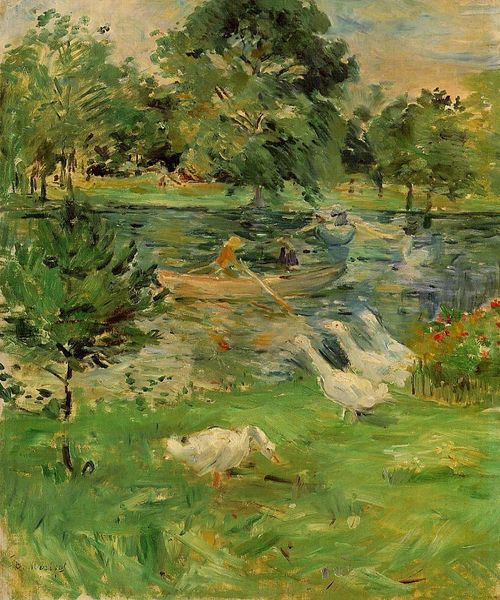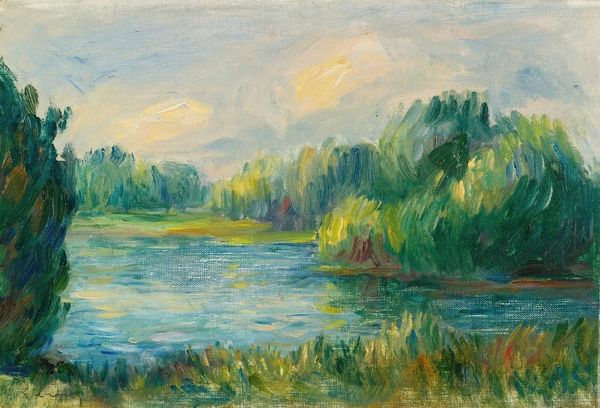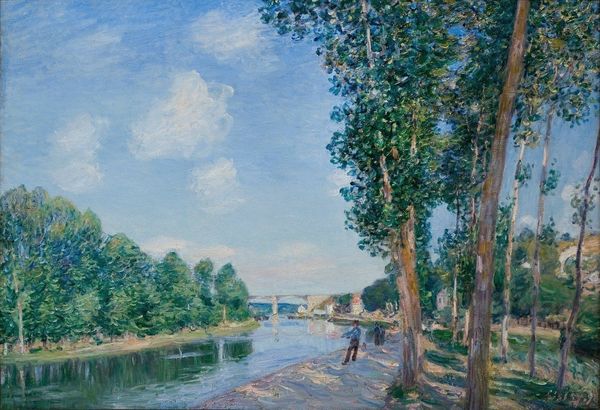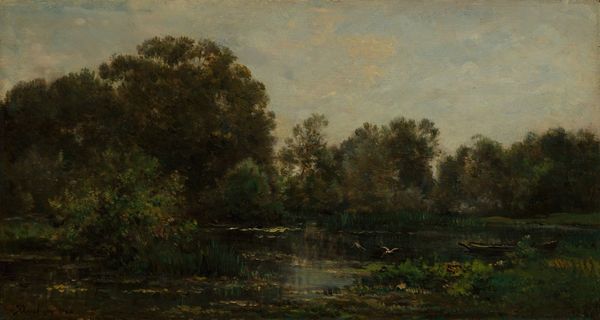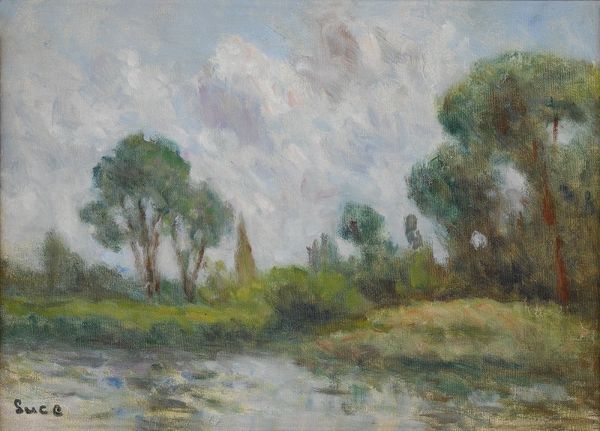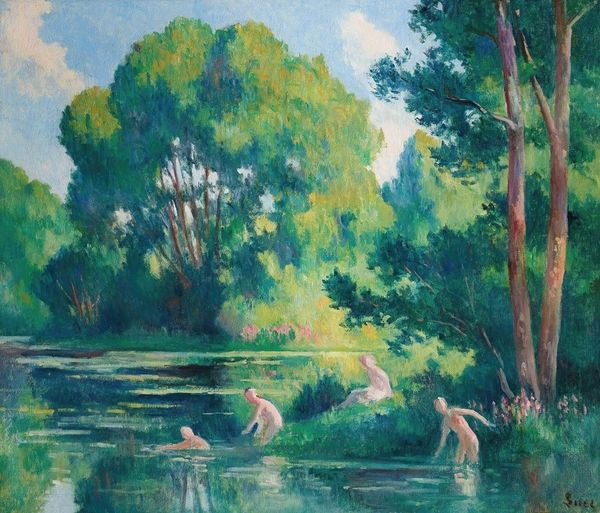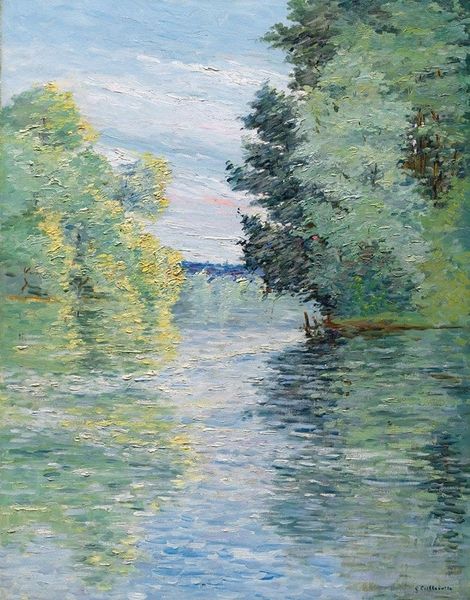
plein-air, oil-paint
#
impressionism
#
plein-air
#
oil-paint
#
landscape
#
figuration
#
folk-art
#
water
Dimensions: 46 x 55 cm
Copyright: Public domain
Editor: Camille Pissarro's "Ducks on the Pond at Montfoucault," painted in 1874, offers a glimpse into rural life through the Impressionist lens. There’s a tranquility to it, but also a sense of social observation with the figure included. What catches your eye when you look at this piece? Curator: Well, first I’m drawn to how Pissarro positions the viewer. We’re not simply looking *at* a landscape; we’re placed almost as participants within a scene of labor and leisure. The woman by the water, tending perhaps to the ducks, contrasts subtly with the emergent leisure culture. Impressionism’s popularity grew as more people experienced lesiure time, yet labor remained a critical reality. Editor: So, you're seeing the painting as capturing that specific moment of social change? Curator: Exactly. Consider the art market and rising middle class at the time. Pissarro, like many Impressionists, was supported by an evolving class structure interested in representations of both idealized nature and scenes of everyday life. Also note the title: not merely “a pond,” but specifically *Montfoucault*, anchoring the scene to a real, identifiable place, something that speaks to a burgeoning sense of regional identity in France after the Franco-Prussian War. Why depict Ducks, and not swans, perhaps? Editor: That’s interesting. I never considered how specific the location might be. And, I agree! Curator: It raises a critical question: Who *is* this painting for? And what values is it reinforcing? Perhaps a longing for a simpler rural past amid rapid urbanization? Editor: I now understand how Impressionism connects with changes in society and cultural values! I really learned a lot thinking about the audience and context around that time. Curator: Precisely! Examining art this way allows us to understand better both the intentions of the artist and the reception of the artwork throughout time.
Comments
No comments
Be the first to comment and join the conversation on the ultimate creative platform.
